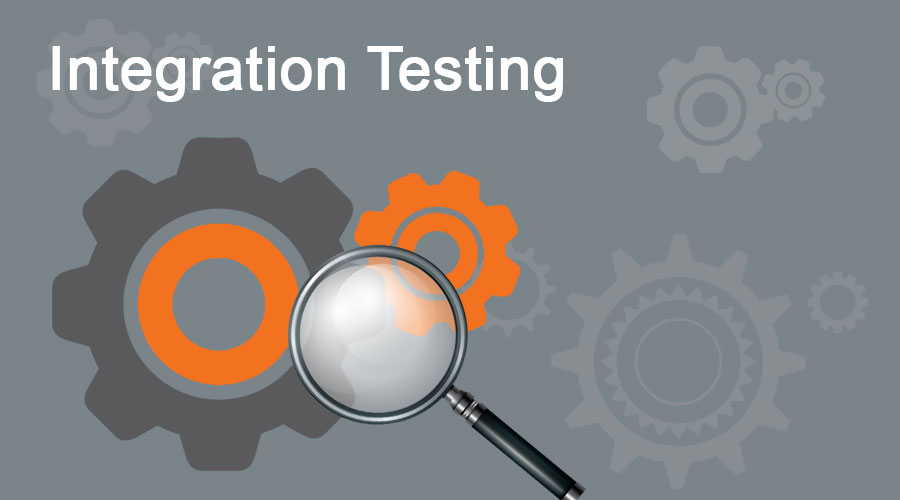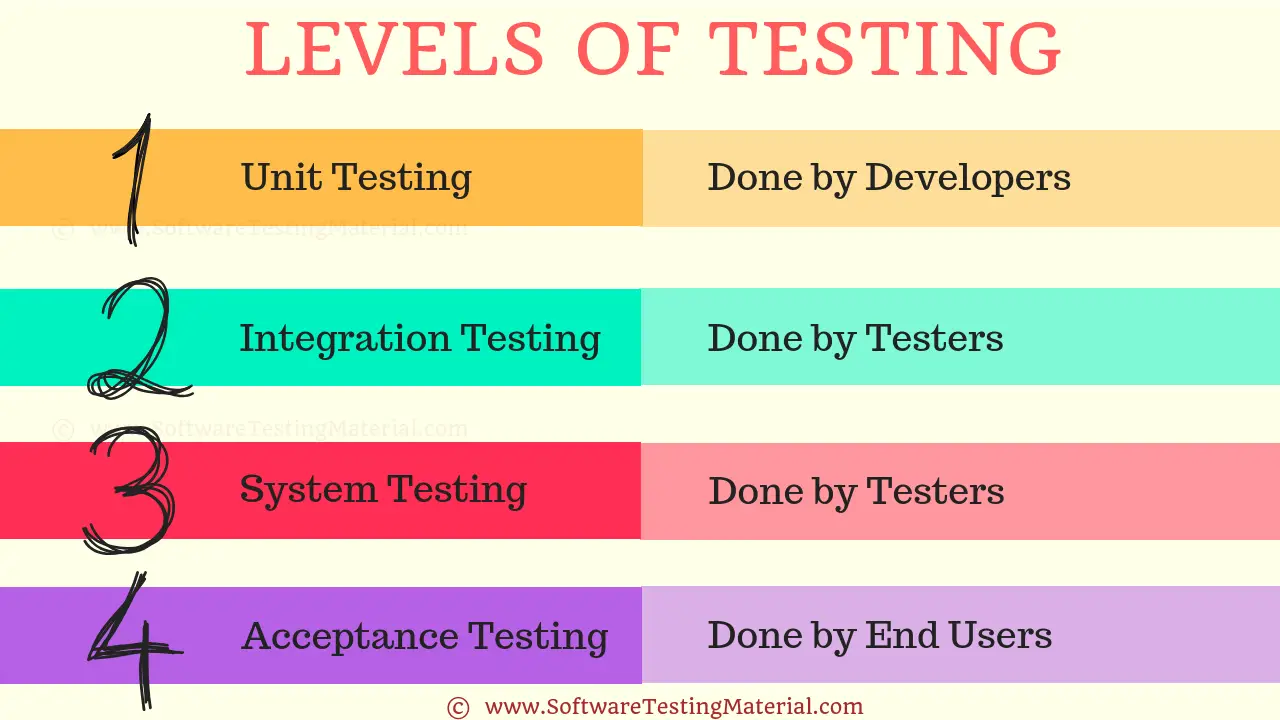“Integration Testing: Ensuring Harmony in Your Software Symphony
Artikel Terkait Integration Testing: Ensuring Harmony in Your Software Symphony
- Data Labeling: The Cornerstone Of Successful AI
- Diving Deep Into IOS Development: A Comprehensive Guide
- Explainable AI: Unveiling The Black Box And Building Trust
- Edge AI: Bringing Intelligence To The Source
- The Rise Of Specialized Silicon: Exploring The Landscape Of AI Hardware
Table of Content
Video tentang Integration Testing: Ensuring Harmony in Your Software Symphony
Integration Testing: Ensuring Harmony in Your Software Symphony

In the world of software development, individual components are rarely islands. They interact, collaborate, and rely on each other to deliver the desired functionality. While unit testing verifies the correctness of individual modules, it’s integration testing that ensures these components work together seamlessly. This article delves deep into the realm of integration testing, exploring its purpose, types, strategies, challenges, and best practices, providing you with a comprehensive understanding of this crucial phase in the software development lifecycle (SDLC).
What is Integration Testing?
Integration testing is a type of software testing that verifies the interaction between different modules or components of a software system. It aims to identify defects that arise when these independent units are combined and function as a cohesive whole. Unlike unit testing, which focuses on individual units in isolation, integration testing concentrates on the interfaces and data flow between them.
The primary goal is to detect issues related to:
- Interface errors: Incorrect data types, mismatched parameters, and inconsistent communication protocols.
- Data flow problems: Data corruption, loss of data, or incorrect data transformation between modules.
- Dependency issues: Conflicts between different components or libraries.
- Exception handling: Ensuring proper error handling and recovery mechanisms when components interact.
- Timing and performance issues: Bottlenecks or delays that arise when components are integrated.

Why is Integration Testing Important?
Integration testing is a critical step in the SDLC for several reasons:
- Early Defect Detection: It identifies defects early in the development cycle, preventing them from cascading into later stages where they become more difficult and expensive to fix.
- Reduced Risk: By validating the interactions between components, integration testing reduces the risk of system failures and unexpected behavior in production.
- Improved Software Quality: It contributes to a more robust and reliable software system by ensuring that all components work together harmoniously.
- Enhanced Collaboration: Integration testing often requires collaboration between different development teams, fostering better communication and understanding of the system as a whole.
- Increased Confidence: Successful integration testing provides developers with increased confidence in the stability and functionality of the integrated system.


Types of Integration Testing:
There are several approaches to integration testing, each with its own advantages and disadvantages. The most common types include:
Big Bang Integration Testing: This approach involves integrating all modules simultaneously and testing them as a single unit. While seemingly simple, it can be challenging to isolate the root cause of defects due to the complexity of the integrated system. This approach is generally suitable for small systems with well-defined interfaces.
Top-Down Integration Testing: This approach starts with the highest-level modules and gradually integrates lower-level modules. Stubs, which are dummy modules that simulate the behavior of lower-level modules, are used to facilitate testing before those modules are actually implemented. This approach is useful for uncovering design flaws early in the development cycle.
Bottom-Up Integration Testing: This approach starts with the lowest-level modules and gradually integrates higher-level modules. Drivers, which are dummy programs that call the lower-level modules, are used to simulate the behavior of higher-level modules. This approach is useful for verifying the functionality of critical components early in the development cycle.
Sandwich Integration Testing: This is a hybrid approach that combines top-down and bottom-up integration testing. It starts by integrating the top-level and bottom-level modules simultaneously and then gradually integrates the middle-level modules. This approach can be effective for large and complex systems.
Integration Testing Strategies:
Choosing the right integration testing strategy is crucial for the success of the testing process. Several factors influence this decision, including the size and complexity of the system, the development methodology used, and the available resources. Here are some common strategies:
Incremental Integration: This strategy involves integrating modules one at a time and testing them after each integration. This allows for easier defect isolation and faster feedback on the integration process. Top-down and bottom-up integration are both examples of incremental integration.
Non-Incremental Integration: This strategy involves integrating all modules at once, as in the big bang approach. This approach is less common due to the difficulty of isolating defects.
Continuous Integration (CI): This is a development practice where developers frequently integrate their code changes into a central repository. Each integration is then automatically verified by an automated build and test process. CI helps to detect integration problems early and often, reducing the risk of major integration issues later in the development cycle.
Steps in the Integration Testing Process:
The integration testing process typically involves the following steps:
- Planning: Defining the scope of the integration testing, identifying the modules to be integrated, and selecting the appropriate integration testing strategy.
- Test Design: Creating test cases that cover the interfaces and data flow between the modules.
- Environment Setup: Configuring the testing environment to simulate the production environment as closely as possible.
- Test Execution: Executing the test cases and recording the results.
- Defect Analysis: Analyzing the test results to identify the root cause of any defects.
- Defect Reporting: Reporting the defects to the development team for fixing.
- Regression Testing: Re-testing the integrated system after the defects have been fixed to ensure that the fixes have not introduced any new problems.
Challenges in Integration Testing:
Integration testing can be challenging due to several factors:
- Complexity: The complexity of the interactions between modules can make it difficult to design effective test cases.
- Dependencies: Dependencies between modules can make it difficult to isolate the root cause of defects.
- Environment Setup: Setting up the testing environment to accurately simulate the production environment can be challenging.
- Data Management: Managing test data and ensuring data consistency between modules can be difficult.
- Communication: Effective communication between different development teams is essential for successful integration testing.
Best Practices for Integration Testing:
To overcome these challenges and ensure the success of integration testing, it is important to follow these best practices:
- Start Early: Begin integration testing as early as possible in the development cycle.
- Define Clear Interfaces: Ensure that the interfaces between modules are clearly defined and documented.
- Automate Testing: Automate as much of the integration testing process as possible.
- Use Test Data Management Tools: Use test data management tools to manage test data and ensure data consistency.
- Collaborate Effectively: Foster effective communication and collaboration between different development teams.
- Document Everything: Document the integration testing process, test cases, and results.
- Use a Version Control System: Use a version control system to track changes to the code and test cases.
- Use a Bug Tracking System: Use a bug tracking system to track defects and manage the defect resolution process.
- Prioritize Tests: Prioritize integration tests based on risk and criticality.
- Perform Regression Testing: Always perform regression testing after fixing defects.
Tools for Integration Testing:
Several tools can assist with integration testing, including:
- Test Automation Frameworks: Selenium, JUnit, TestNG, pytest.
- API Testing Tools: Postman, SoapUI.
- Mocking Frameworks: Mockito, EasyMock.
- Continuous Integration Tools: Jenkins, Travis CI, CircleCI.
- Test Management Tools: TestRail, Zephyr.
FAQ on Integration Testing:
Q: What is the difference between integration testing and system testing?
A: Integration testing verifies the interaction between different modules of a system, while system testing verifies the functionality of the entire system as a whole. System testing is performed after integration testing and focuses on validating that the system meets the specified requirements.
Q: When should integration testing be performed?
A: Integration testing should be performed after unit testing and before system testing. It is typically performed iteratively as modules are developed and integrated.
Q: Who is responsible for performing integration testing?
A: Integration testing can be performed by developers, testers, or a dedicated integration testing team.
Q: What are stubs and drivers?
A: Stubs are dummy modules used in top-down integration testing to simulate the behavior of lower-level modules. Drivers are dummy programs used in bottom-up integration testing to simulate the behavior of higher-level modules.
Q: How do I choose the right integration testing strategy?
A: The choice of integration testing strategy depends on several factors, including the size and complexity of the system, the development methodology used, and the available resources.
Conclusion:
Integration testing is an indispensable phase in the software development lifecycle. It acts as the bridge between isolated unit-tested components and a fully functional system. By focusing on the interactions between modules, integration testing uncovers defects that would otherwise remain hidden until later stages, potentially leading to costly rework and system failures. By understanding the different types of integration testing, adopting appropriate strategies, and following best practices, development teams can ensure that their software components work together harmoniously, resulting in a more reliable, robust, and high-quality product. Embracing integration testing is not just about finding bugs; it’s about building confidence in the overall system and delivering exceptional software experiences.
